
3rd Grade science unit about patterns in motion. This is a folder that includes a presentation on teaching 3D science and a lesson plan for 3.3.2.
- Subject:
- Science
- Material Type:
- Unit of Study
- Provider:
- UtSTA
- Date Added:
- 02/24/2023

3rd Grade science unit about patterns in motion. This is a folder that includes a presentation on teaching 3D science and a lesson plan for 3.3.2.
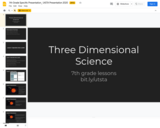
Google Slides presentations that contain three lessons. The first lesson is exploring why planets orbit the Sun (7.1.5), the second lesson is exploring patterns in California plate tectonics (7.2.5), and the third lesson is exploring the coronavirus (7.3.1).
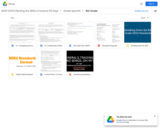
Lyrics to songs adapted to cover scientific concepts and topics.
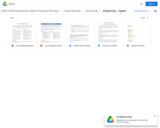
Lesson plans or supporting resources that aid teacher instruction.
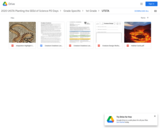
Google folder with lesson plan and accompanying resources
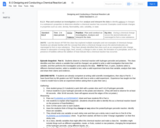
Students observe a chemical reaction with hydrogen peroxide and potatoes. The class identifies and then selects a variable that could be changed, are guided to write a valid investigation that tests that variable, and then performs the investigation and analyzes the data. Then, in pairs, students select a different chemical reaction, select a variable to test, write a valid experiment that tests that variable, analyze their data and share their claims and evidence

Plan and carry out an investigation of the properties of water and its effects on Earth materials and surface processes. Examples of properties could include waterÕs capacity to expand upon freezing, dissolve and transport material, or absorb, store, and release energy.
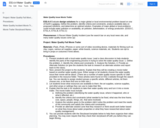
Evaluate design solutions for a major global or local environmental problem based on one of EarthÕs systems. Define the problem, identify criteria and constraints, analyze available data on proposed solutions, and determine an optimal solution. Examples of major global or local problems could include water pollution or availability, air pollution, deforestation, or energy production.
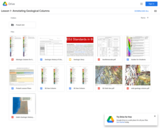
Google folder with lesson plan and accompanying resources/ Students use resources to help identify time periods when layers in SE geological columns were deposited. Next they will use maps of Utah through time to identify time periods where San Juan County was covered by water. Water allows for deposition of sediments including salts as the water evaporates. Once they identify time periods they are given a geological column for SE Utah and identify where in time San Juan had ocean/seas/marshes. Last, students will identify the four main natural resources: Potash, Oil and Gas, Copper, and Uranium within the geological columns with teacher direction.
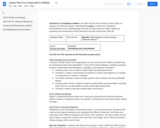
Students will observe the change in mass of steel wool after burning. They will model (draw) what happened to the wool during combustion. Students will plan and carry out an investigation of the conservation of matter in three chemical reactions. Students will make physical models of atoms, molecules, and chemical reactions. Students will then use computer simulations to continue making sense of the conservation of mass in chemical reactions.
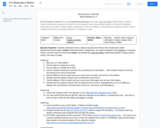
Students will observe how a balloon expands and shrinks when heated and cooled (phenomenon) and make a model of what they think is happening, use a pHet simulation to find patterns in molecular motion, and then return to revise their model, and identify the cause and effect relationship between energy, particle motion, and state of matter.
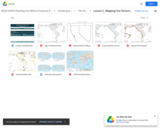
A Google Drive folder with lesson plan and accompanying resources studying volcano and earthquake trends follows similar patterns as plate boundaries.